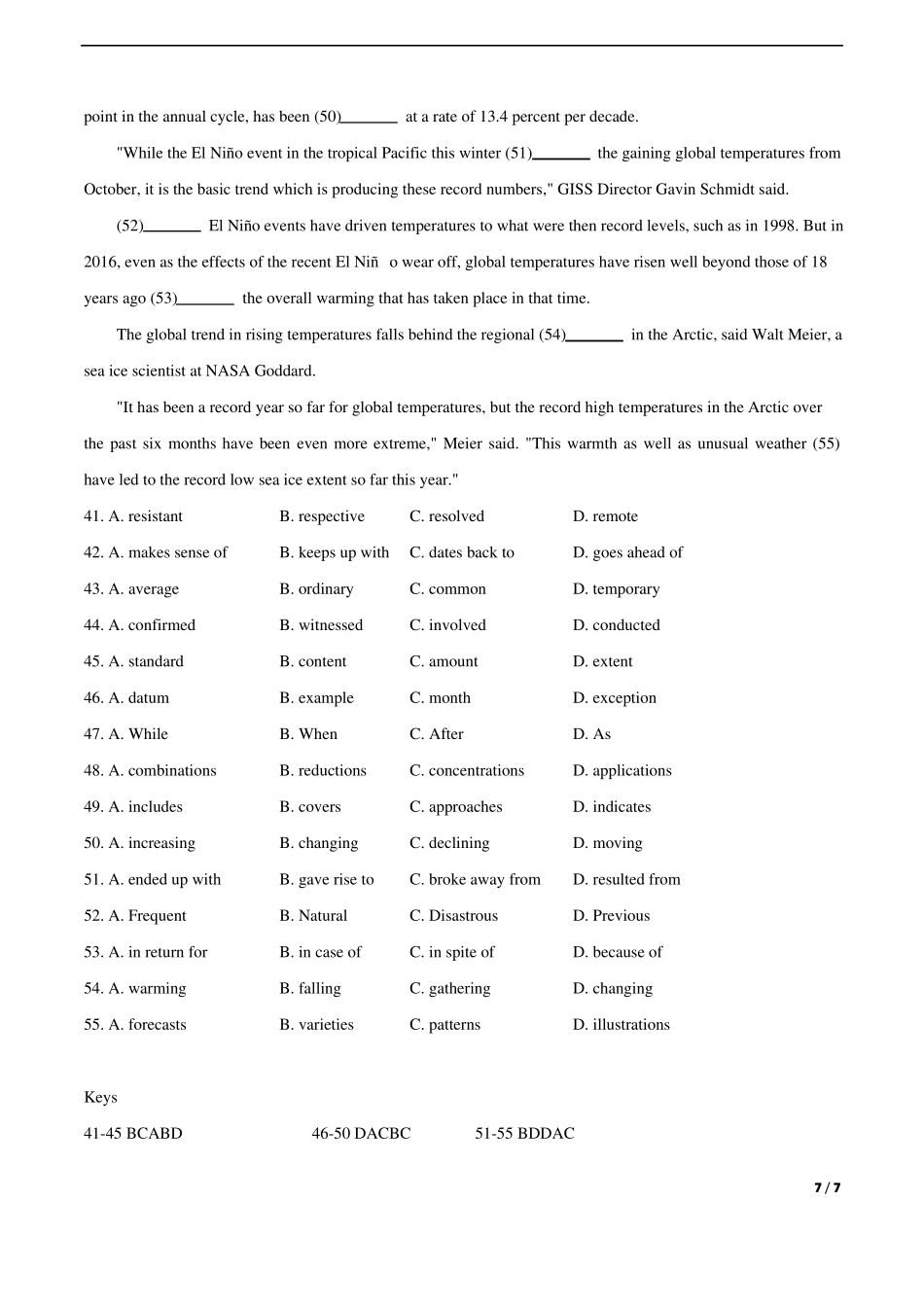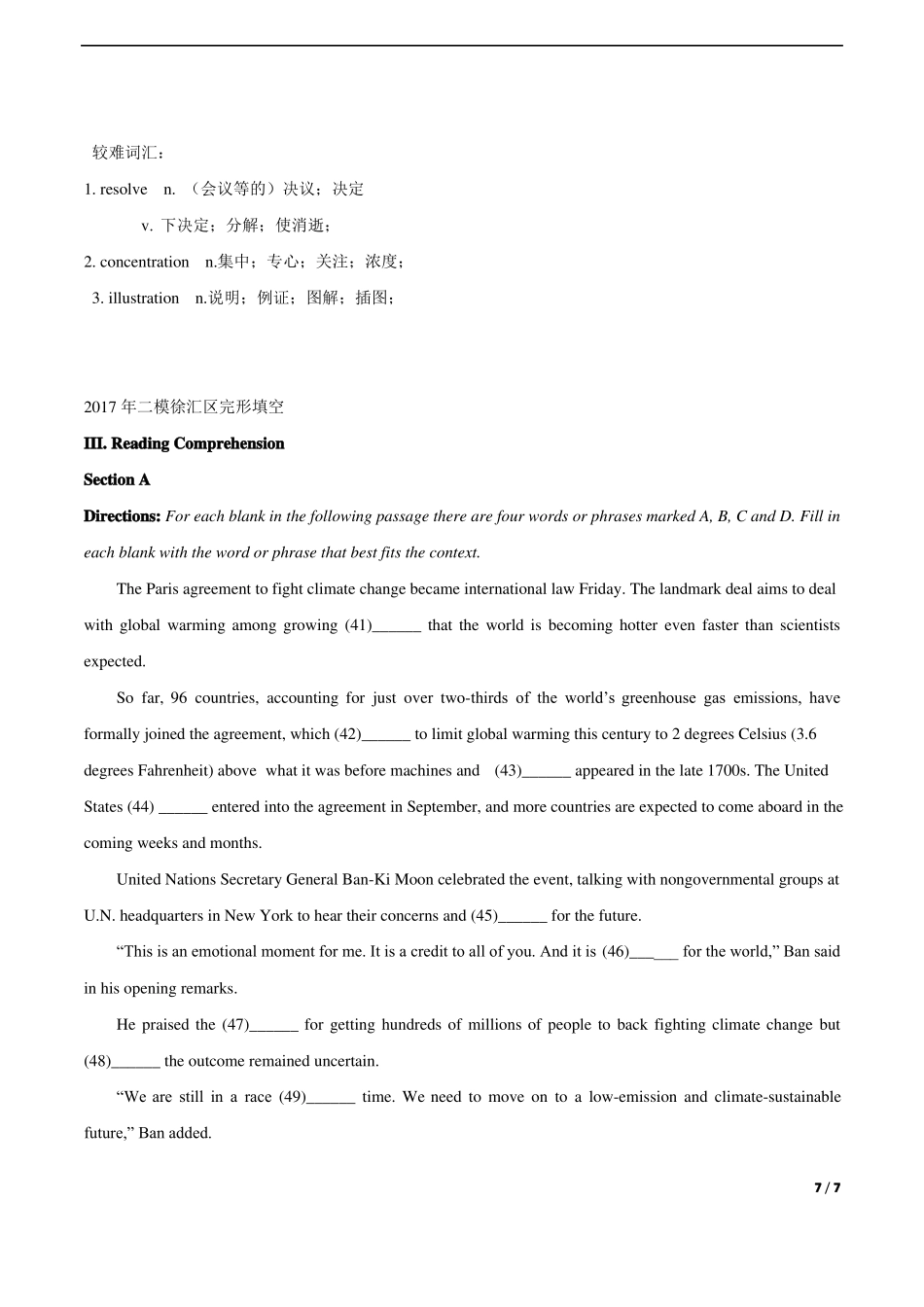2016-2017 学年高三一模二模环保类完型填空专项训练环保类徐汇一模徐汇二模黄浦一模2017 年一模徐汇区 完形填空III. Reading ComprehensionSection ADirections: For each blank in the following passage there are four words or phrases marked A, B, C and D. Fill ineach blank with the word or phrase that best fits the context.Two key climate change indicators —— global surface temperatures and Arctic sea ice extent —— havebroken numerous records through the first half of 2016, according to NASA analyses of ground-based observationsand satellite data. Each of the first six months of 2016 set a record as the warmest (41)month globally inthe modern temperature record, which (42)1880, according to scientists at N ASA’s Goddard Institute forSpace Studies (GISS) in New York. The six-month period from January to June was also the planet’s warmesthalf-year on record, with a(n) (43)temperature 1.3 degrees Celsius (2.4 degrees Fahrenheit) warmer thanthe late nineteenth century.Five of the first six months of 2016 also (44)the smallest respective monthly Arctic sea ice (45)since regular satellite records began in 1979, according to analyses developed by scientists at NASA’s GoddardSpace Flight Center, in Greenbelt, Maryland. The one (46), March, recorded the second smallest for thatmonth.(47)these two key climate indicators have broken records in 2016, NASA scientists said it is moresignificant that global temperature and Arctic sea ice are continuing their decades-long trends of change. Bothtrends are ultimately driven by rising (48)of heat-trapping carbon dioxide and other greenhouse gases inthe atmosphere.The extent of Arctic sea ice at the peak of the summer melt season now typically(49)40percent less area than it did in the late 19...


